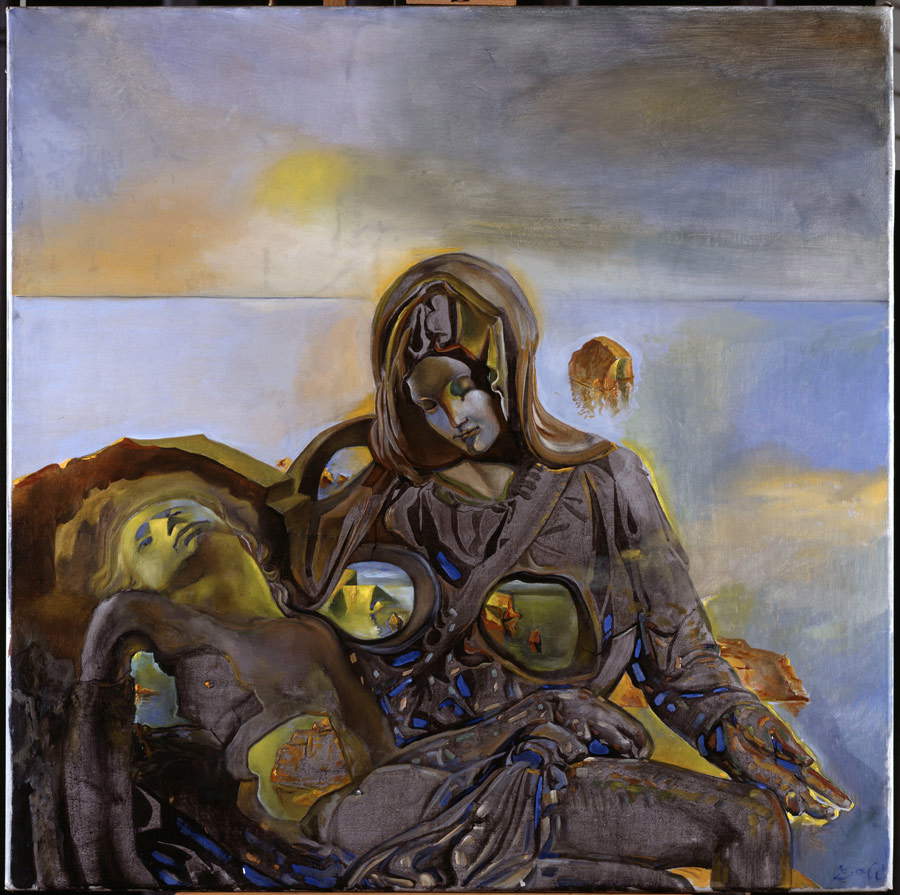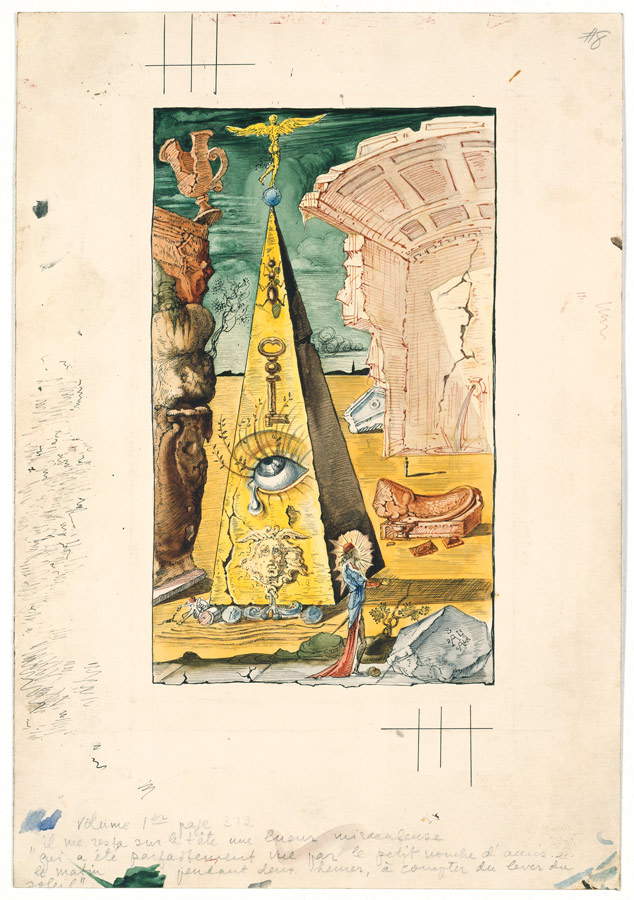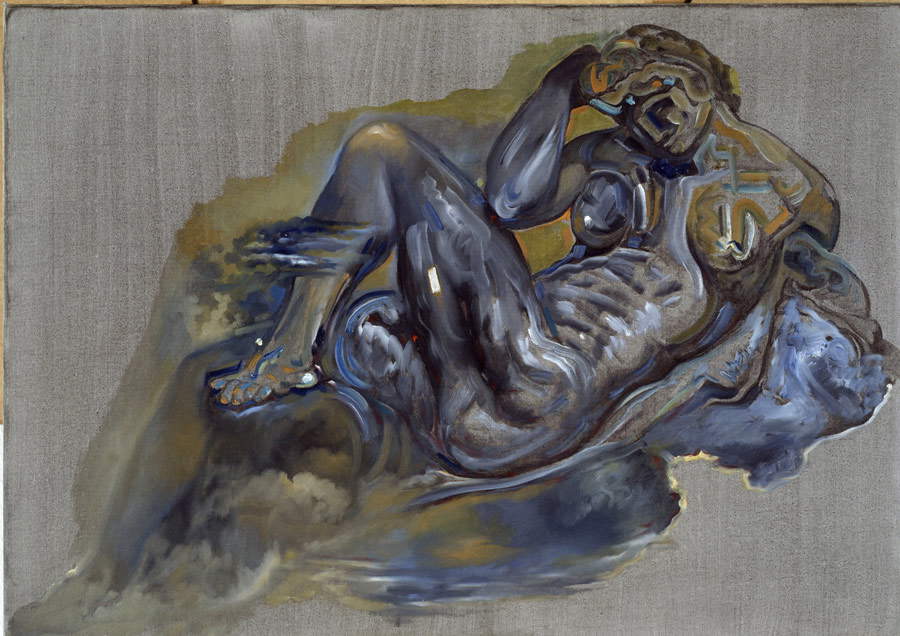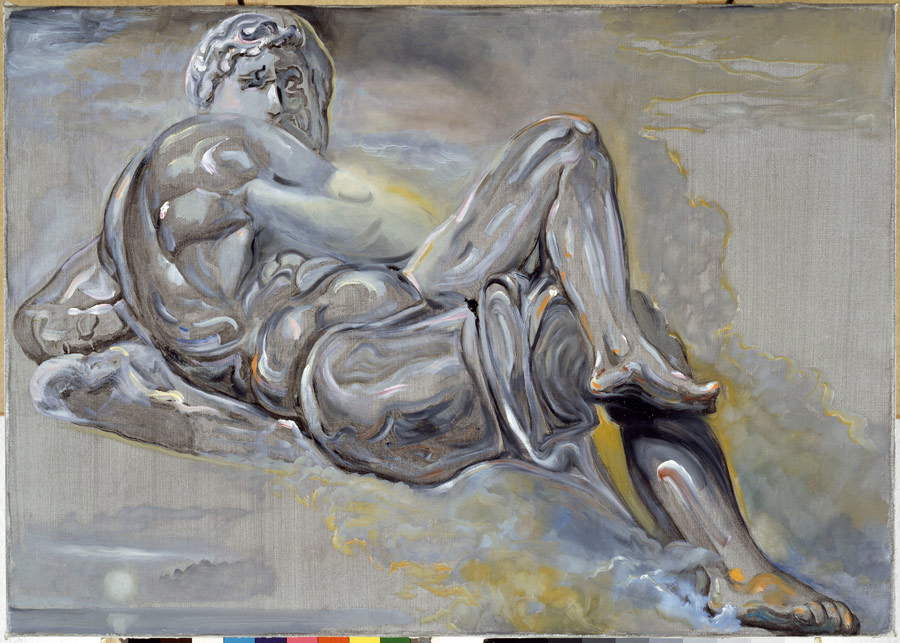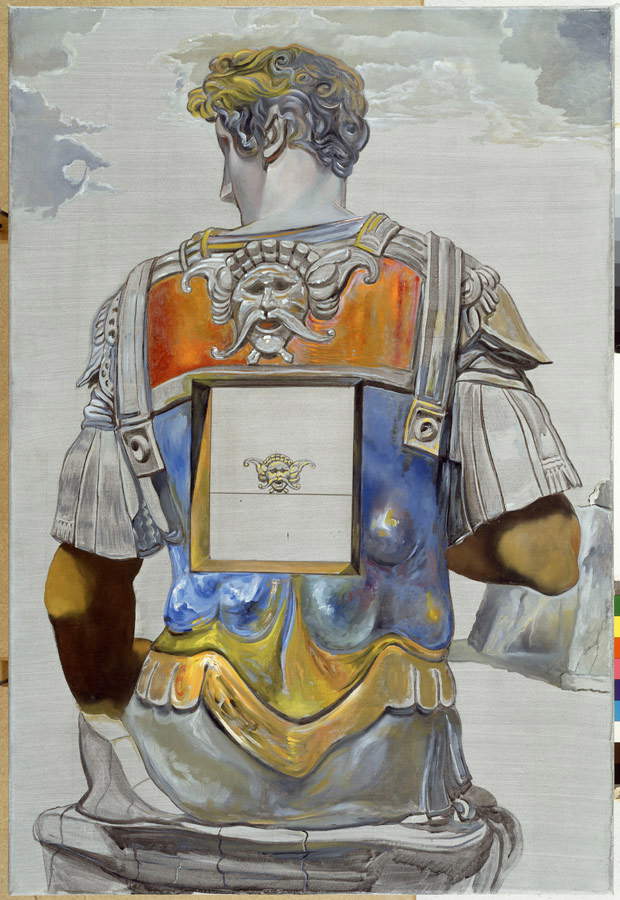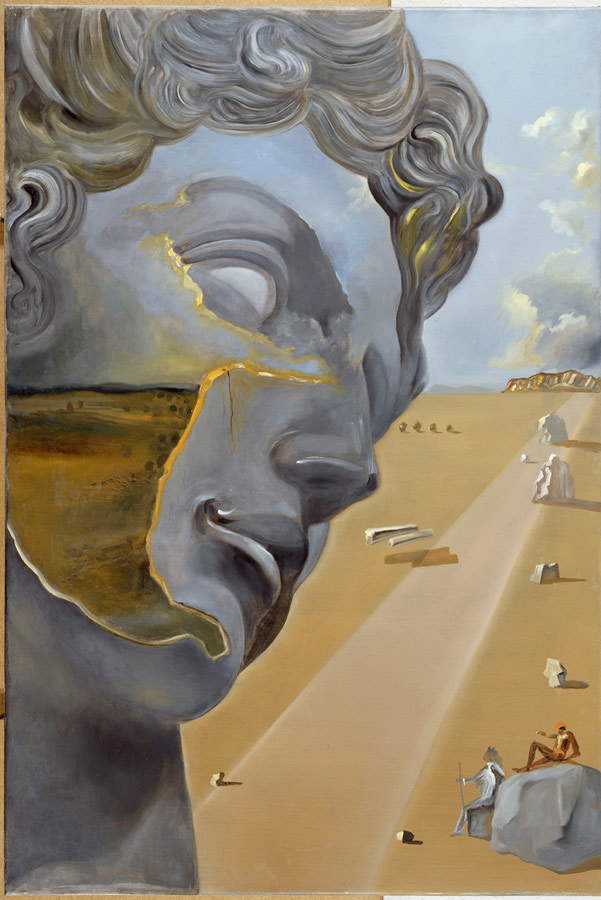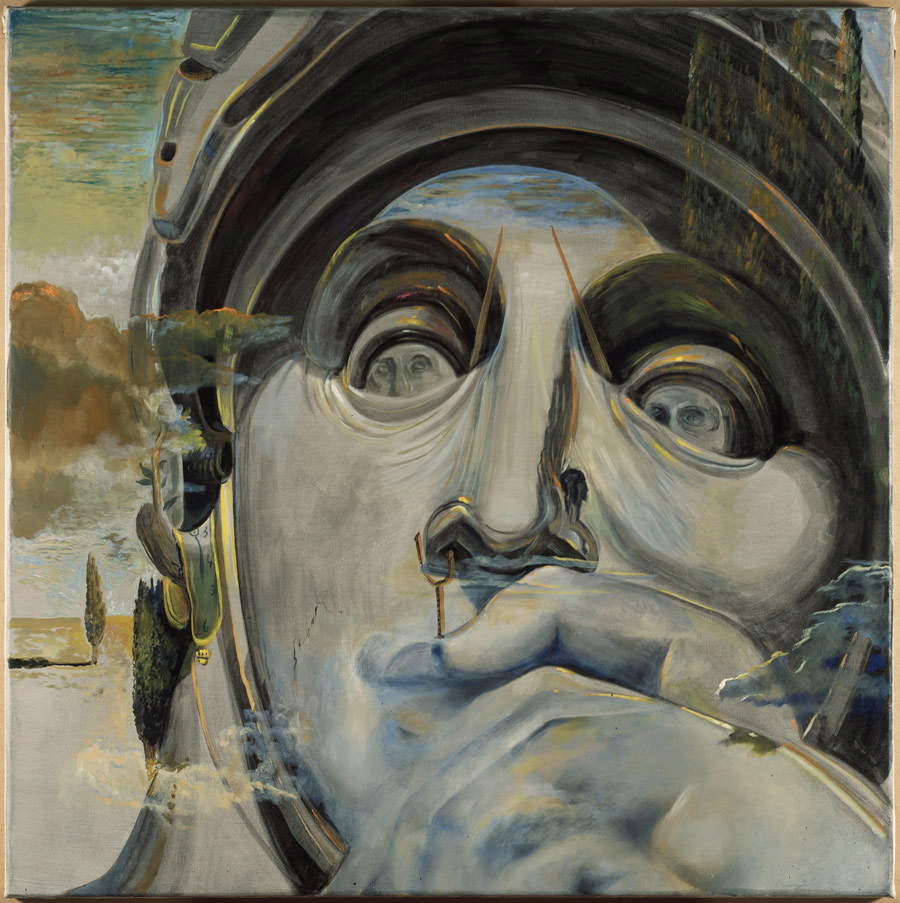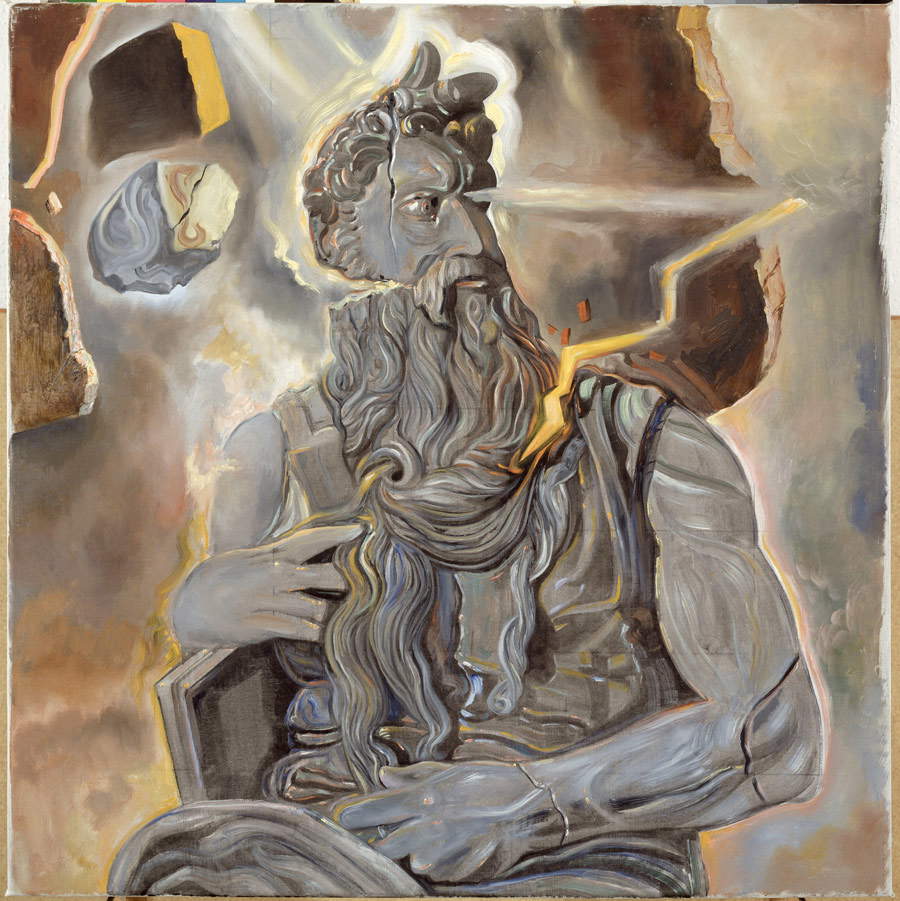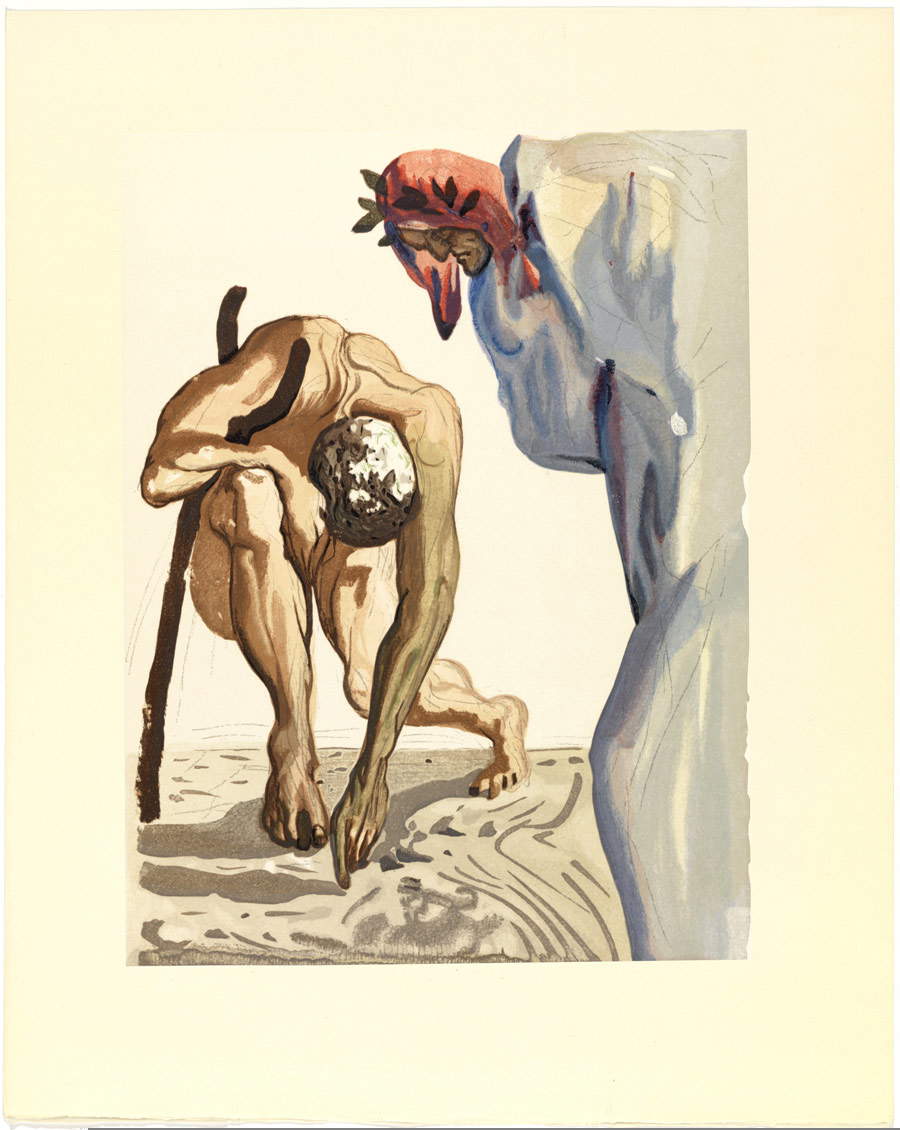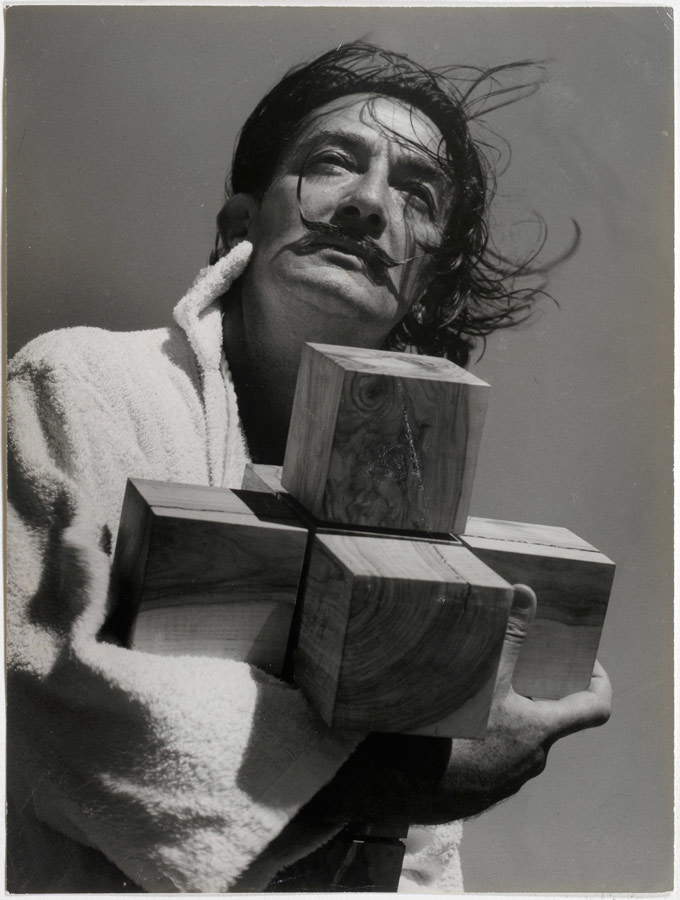by Luca Zuccala , published on 27/10/2016
Categories: Exhibition reviews
/ Disclaimer
Review of the exhibition 'Salvador DalÃ. The Classical Dream' in Pisa (Palazzo Blu) written by Luca Zuccala of ArtsLife.
Cold light. Sidereal hallucinations. Surreal shadows of the psyche stretch and dilate on the banks of the Arno River until next February. Pisa, Palazzo Blu: A labyrinthine, cobalt-toned installation illuminates the vestiges of Salvador Dalí’s (1904-1989) “ancient” dreams. Interlocking walls scaled in dreamy blues and turquoises grip the visitor in the grip of Dalí’s classic Surrealist reinterpretation. One of the many challenges experienced between feelings of revenge and aspiration for eternity by the egocentric Catalan talent. The two exhibition floors struggle to contain the polymorphous and overpowering personality of Figueres’ multifaceted and manic spirit. No small feat to nail to the wall all that train of anxieties and anguish that is being presented for the first time in Italy as a uniform stylistic and thematic body of work. About one hundred and fifty works from the triple provenance-Theatro Museo Dalí in Figueres, Museum St. Petersburg in Florida and the Vatican Museums, from where the ambiguous Trinity of 1960 arrives with pomp and circumstance- divided into four ideal nuclei: the landscapes of the “new era of mystical painting” 1950s-early 1960s, where the angel-muse of his wife hovers in the timeless grays of pearly spaces; the gouache, watercolor and sanguine illustrations of the Divine Comedy, made between 1950 and 1952 and printed in photogravure relief between 1959 and 1963; drawings recounting the legendary Life of Benvenuto Cellini, a master goldsmith and eclectic spirit whom Dalí revered, feeling he was akin to his multifaceted persona; and “the dream of the classical” of the oils on canvas-attracted from the tombs of Lorenzo and Giuliano de’ Medici and Michelangelo’s Pieta-from the early 1980s, among the last works the artist created.
 |
| Salvador Dalí, Geological Echo. From Michelangelo’s Pieta (1982; oil on canvas, 100 x 100 cm; Figueres, Fundació Gala-Salvador Dalí). ©Salvador Dalí, Fundació Gala-Salvador Dalí by SIAE 2016 |
 |
| Salvador Dalí, Illustration for The Autobiography of Benvenuto Cellini (1945; watercolor and ink on paper, 27.3 x 18.9 cm; Figueres, Fundació Gala-Salvador Dalí). ©Salvador Dalí, Fundació Gala-Salvador Dalí by SIAE 2016 |
 |
| Salvador Dalí, Illustration for The Autobiography of Benvenuto Cellini (1945; watercolor and ink on paper, 25 x 14.3 cm; Figueres, Fundació Gala-Salvador Dalí). ©Salvador Dalí, Fundació Gala-Salvador Dalí by SIAE 2016 |
Sublime as he is, the Dalí of the latest performances on display in Pisa appears a bit compassed. A plethoric sign at times forced. Antithetical to that of the Canticles of Comedy: fresh, bright, essential. “Slight traces of moisture on divine cheese. I want my watercolors to have the sheen of butterfly wings,” he wrote about the Divine challenge. Flowing tightly from one room to the next are Inferno, Purgatorio, Paradiso, while the last “classic” gasps of immortality are mirrored in pompier cloyingness and lost in manneristic virtuosity that redundancies the subjects. Often pedantic and heavy-handed is the excess of decorativism. A weary hand however unquestionably brilliant. It blends like his soft pocket watch the cues of his life. Symbolist atmospheres, metaphysics, surrealism, cubism. Abysses and dazzles of the psyche. Alterations and hallucinations of consciousness. Science, religion and mysticism assembled in obsessive metamorphosis and illusory calmness of form. Combinatorial processes. Residues of corpuscular painting. Mystic-nuclear traces. The calligraphic sign that overbearingly (and clumsily) bursts onto the scene, infilling the figures and saturating the canvas (see Aurora and Crepuscolo from the Tomb of Lorenzo de’ Medici, 1982). Christ, The Warrior, Giuliano de’ Medici (1982): fragments of Michelangelo’s sculpted dreams immortalized and zoomed in on large format canvases poised between idea and matter. Simultaneous representation of outer and inner reality. The Michelangelesque marble of the Pieta (1982) is transformed into perforated rock. A geological gruyère from which the sea emerges. Compenetration of figure and landscape. On the Moses (1982), svelte brushstrokes thicken flashes of yellow and orange light: they frame forms and silhouette limbs against iridescent mystical backgrounds. Horizontal border segments mark the paintings. Straight lines are lost in Renaissance perspectives and figure diagonals. Ocean and sky cut the horizon by liquefying. Landscapes are embodied in the open windows in the faces while more or less threatening clouds dust the faces. On the ear of Lorenzo de Medici (1982) unfailingly melts the “onion” of time. Memory persists and expands once again. Surreal beckoning classicality trying to imprison it.
 |
| Salvador Dalí, Untitled. Night from Michelangelo’s Tomb of Giuliano de’ Medici (1982; oil on canvas, 67 x 95 cm; Figueres, Fundació Gala-Salvador Dalí). ©Salvador Dalí, Fundació Gala-Salvador Dalí by SIAE 2016 |
 |
| Salvador Dalí, Untitled. Day from Michelangelo’s Tomb of Giuliano de’ Medici (1982; oil on canvas, 67.2 x 95 cm; Figueres, Fundació Gala-Salvador Dalí). ©Salvador Dalí, Fundació Gala-Salvador Dalí by SIAE 2016 |
 |
| Salvador Dalí, Untitled. Giuliano de’ Medici from Michelangelo’s Tomb of Giuliano de’ Medici (1982; oil on canvas, 140 x 95 cm; Figueres, Fundació Gala-Salvador Dalí). ©Salvador Dalí, Fundació Gala-Salvador Dalí by SIAE 2016 |
 |
| Salvador Dalí, Untitled. Giuliano de’ Medici from Michelangelo’s Tomb of Giuliano de’ Medici (1982; oil on canvas, 140 x 95 cm; Figueres, Fundació Gala-Salvador Dalí). ©Salvador Dalí, Fundació Gala-Salvador Dalí by SIAE 2016 |
 |
| Salvador Dalí, The Warrior or Los embozados. Lorenzo de’ Medici from Michelangelo’s Tomb of Lorenzo de’ Medici (1982; oil on canvas, 100 x 100 cm; Figueres, Fundació Gala-Salvador Dalí). ©Salvador Dalí, Fundació Gala-Salvador Dalí by SIAE 2016 |
A supposedly dispassionate and self-referential return to order that even in the last brushstrokes of the 1980s is meant to astonish and beguile. Echoing the lesson of the classic rediscovered in the 1940s on American soil after his expulsion from the Surrealist group. Fighting spasmodically toward immortality. Tension sought among the artistic summae of Michelangelo in primis; Dante, Raphael, Bronzino and Perugino then. Reinterpretations that nostalgically evoke a life dedicated to art, to which Dalí tries until death to cling. Aiming for the lost ideal. Starting with the perfect joys of the Renaissance and the admirable technique of the gods of the past: “Start drawing and painting like the old masters. After that you can do whatever you want: everyone will respect you.” And again, “If you refuse to study anatomy, the art of drawing and perspective, the mathematics of aesthetics and the science of color, let me tell you that this is a sign more of armchair than of genius.” He wrote post sojourn in the Peninsula, “I am all overrun with geometric canons, measures, proportions.” The iconographic power of classical art becomes a tool for interpreting reality itself according to the paranoid-critical method. Merging tangible reality with the poetic dimension of the dream. In search of the fourth dimension, as one of his paintings from 1979 titles it. Yet another lesson-vision of Dalí.
Exhibition: Salvador Dalí, The Dream of the Classic (Pisa, Palazzo Blu, Oct. 1, 2016 - Feb. 5, 2017)
 |
| Salvador Dalí, Untitled. Moses from the Tomb of Julius II by Michelangelo (1982; oil on canvas, 100 x 100 cm; Figueres, Fundació Gala-Salvador Dalí). ©Salvador Dalí, Fundació Gala-Salvador Dalí by SIAE 2016 |
 |
| Salvador Dalí, The Princes of the Flowery Valley, Purgatorio, vol. I, canto VII. Illustration for the Divine Comedy (1959-1963; relief photogravure with xylographic transposition on paper, 33 x 26.4 cm; Figueres, Fundació Gala-Salvador Dalí). ©Salvador Dalí, Fundació Gala-Salvador Dalí by SIAE 2016 |
 |
| Català-Roca, Francesc, Salvador Dali with Hipercubic Cross (1953). ©Català-Roca/Fundació Gala-Salvador Dalí, Figueres, 2016. Image Rights of Salvador Dalí reserved. Fundació Gala-Salvador Dalí, Figueres, 2016 |
Warning: the translation into English of the original Italian article was created using automatic tools.
We undertake to review all articles, but we do not guarantee the total absence of inaccuracies in the translation due to the program. You can
find the original by clicking on the ITA button. If you find any mistake,please contact us.
